Don’t fall victim to an overzealous mechanic.
Mark is the owner of a beautiful Cessna 185 Skywagon based in the San Francisco Bay area. Awhile back, Mark and his wife travelled to Minden, Nevada in this airplane to visit with Mark’s mother-in-law who was ill. A few days later, they returned to the airport intending to fly home. But when Mark started the Skywagon’s engine—a Continental IO-520—he saw just about the last thing a pilot wants to see: The oil pressure gauge never budged from the zero mark. [Expletive deleted.]
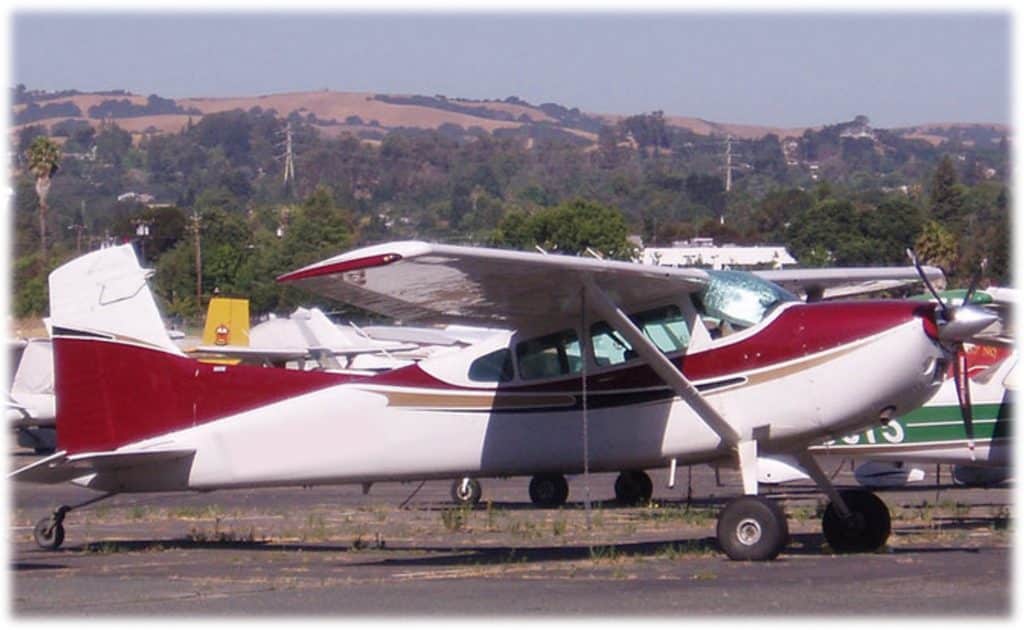
After a brief period of “this can’t be happening!”, mark shut down the engine and started thinking about what to do next. It was a Sunday, of course. (These things always happen on weekends when all the maintenance shops on the field are closed.) The only sign of life at this non-towered airport was the presence of a couple of linemen at the airport’s sole FBO.
Mark approached one of the linemen and asked if he knew of any A&P mechanics in the area that might be able to help with his predicament. The lineman rummaged around in the office and emerged with the phone number of a local A&P who lived nearby. Mark called the number, explained his exigency, and the mechanic suggested Mark have the FBO tow the aircraft to his maintenance hangar and promised to meet him there.
Little did Mark anticipate the drama that would unfold over the next few hours.
The A&P’s Diagnosis
When the two met up at the hangar, the mechanic’s first few steps were reasonable and prudent. The first thing he did was to check the dipstick to make sure there was plenty of oil in the sump (there was). Next he verified the symptom reported by Mark by plumbing a calibrated pressure gauge into the oil system and starting the engine. Both the cockpit gauge and the external gauge read zero, confirming that this was a real lack of oil pressure and not just an indication problem with the cockpit gauge.
The A&P removed the oil filter, cut it open, and inspected its contents. He then told Mark that there was “significant bearing metal in the filter” and informed him that the engine would need to be torn down. While Mark was still processing this unexpected bad news, the A&P disappeared into his office or a few minutes, and emerged with a written estimate for the engine removal, teardown and reinstallation totaling something well north of $10,000.
Mark was now in a complete state of shock. He was stuck somewhere he didn’t want to be. Some mechanic he’d never met before and didn’t know whether or not to trust was telling him that his engine was toast. Mark was way outside his comfort zone. He felt he needed an expert second opinion before approving such a drastic course of action. He placed a call to my company hoping someone would answer on a Sunday. He wound up speaking with me.
My Second Opinion
Mark briefed me on his situation. He sounded to me like a pretty maintenance-savvy owner. After establishing that both of us had iPhones, I asked Mark to send me a couple of iPhone photos of the oil filter media that the A&P had described as containing “significant bearing material” so I could assess the magnitude of the disaster. A few minutes later, I received the several photos of the filter media including this one:
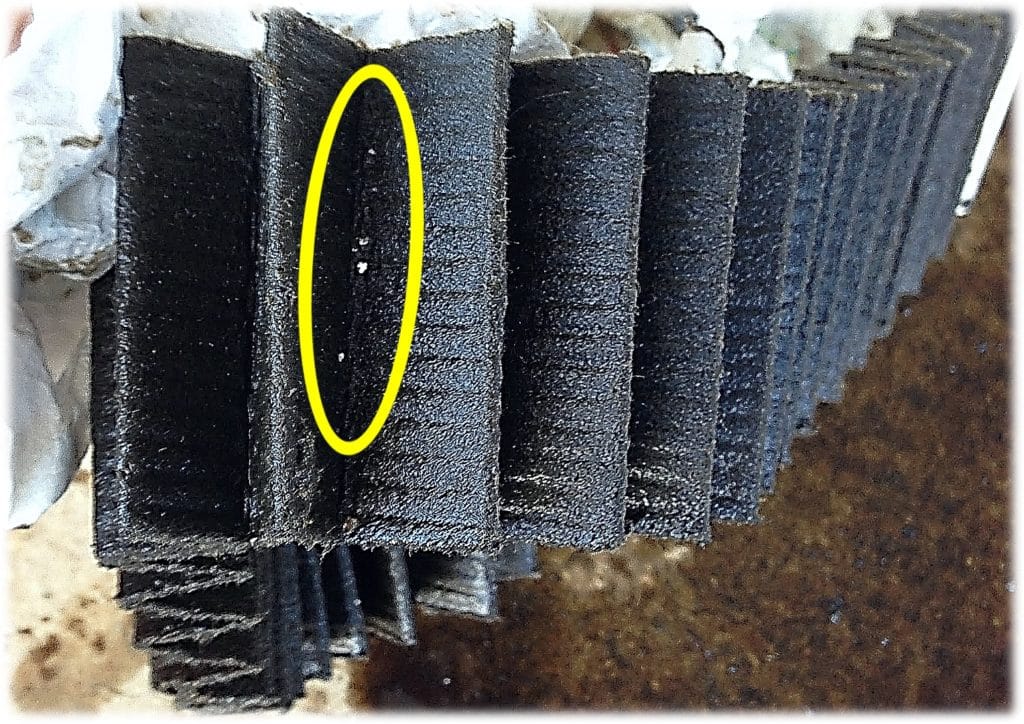
I examined the photos under magnification and saw only a small amount of what appeared to be aluminum. It didn’t strike me as being a significant quantity, and it certainly didn’t appear to be bearing material. In my judgment, this sure didn’t seem like anything that justified the drastic step of tearing the engine down.
I phoned Mark and explained to him that by far the most likely cause for lack of oil pressure at engine start was some sort of foreign matter contaminating the oil pressure relief valve (PRV). The PRV is what regulates engine oil pressure. It’s a simple device consisting of a spring-loaded plunger that is designed to open when oil pressure reaches a certain level (typically about 50 PSI for Continentals and 70 PSI for Lycomings) to bypass excess pressure from the pump and limit it to the desired value. If foreign matter gets into the PRV during engine operation and prevents it from closing properly, then at the next startup oil pressure will bypass the pump resulting in a low or even zero pressure indication on the gauge.
So, I suggested that Mark ask the A&P to unscrew the PRV housing and inspect the PRV for contamination, and I ask that Mark report back with the A&P’s findings. About 30 minutes later, Mark sent me this iPhone photo:
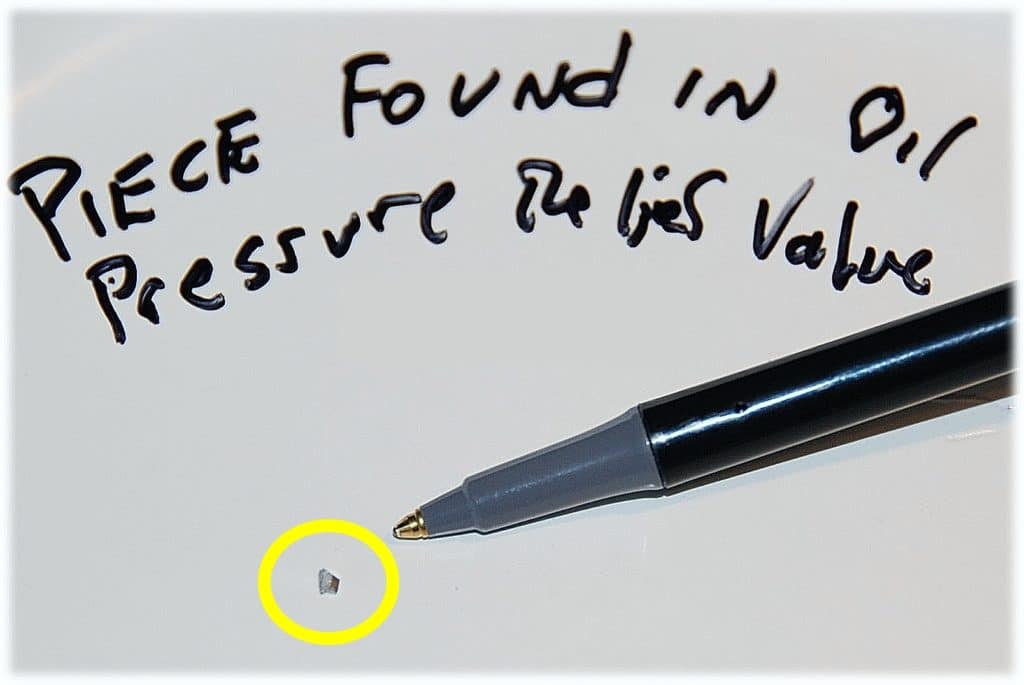
I asked Mark to check the tiny chunk of metal with a magnet. He reported that it was nonmagnetic. Given that fact plus the obvious silvery color, I concluded it was almost certainly aluminum (and not bearing material). I told Mark that I was not particularly concerned about this tiny piece of aluminum “unless there are a bunch of its brothers and sisters in the oil sump.”
Hostage Situation?
Mark relayed my thoughts to the local A&P, who still insisted that the engine needed to be torn down. Now Mark began to panic. “What can I do?” he asked me. “Can this A&P ground my airplane? Can he hold it hostage until I agree to the $10,000+ teardown?”
I reassured Mark that there was no need to panic, and that I would help guide him through this kerfuffle. In the course of our conversation, I learned that Mark was handy with tools, did his own oil changes and other preventive maintenance, and even carried a pretty decent traveling toolkit in his plane. Since the local A&P appeared to be seriously spring-loaded to the got-to-tear-it-down position and seemed unlikely to cooperate with any other resolution, I suggested that Mark instruct the A&P to put his plane back together, obtain a logbook entry for the work performed so far, pay the fellow for his labor, and get the plane out of the A&Ps hangar pronto.
The A&P reluctantly reassembled the PRV, installed a new oil filter, cowled up the engine, and towed the airplane out of his hangar. He handed Mark an invoice for a couple of hours of labor and a gratuitously nasty logbook entry that made it clear Mark was removing his airplane against the mechanic’s advice. (I told Mark not to worry about the nasty logbook entry, not to paste it into his logbook, and to throw it away after one year as permitted by FAR §91.417.)
Taking Matters Into His Own Hands
Mark started the Skywagon’s engine. Oil pressure now came up just fine (as I was confident it would). Mark sent me another iPhone photo:
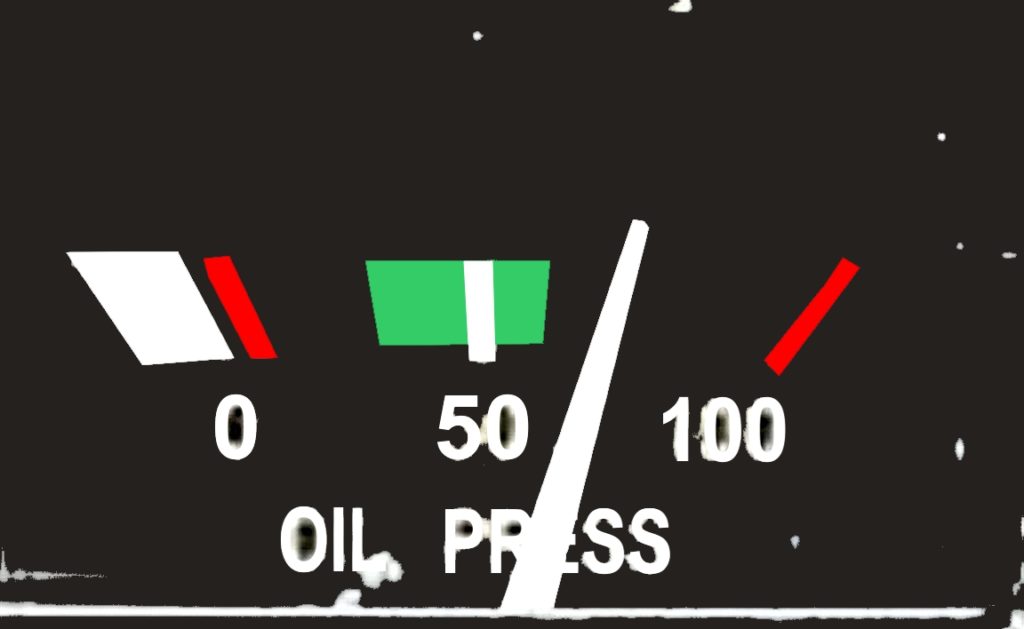
I had Mark taxi back over to the FBO and drain his engine oil into a bucket through some cheesecloth to find out whether there were any more chunks of aluminum in the sump. The iPhone photo he sent made it clear that there weren’t:
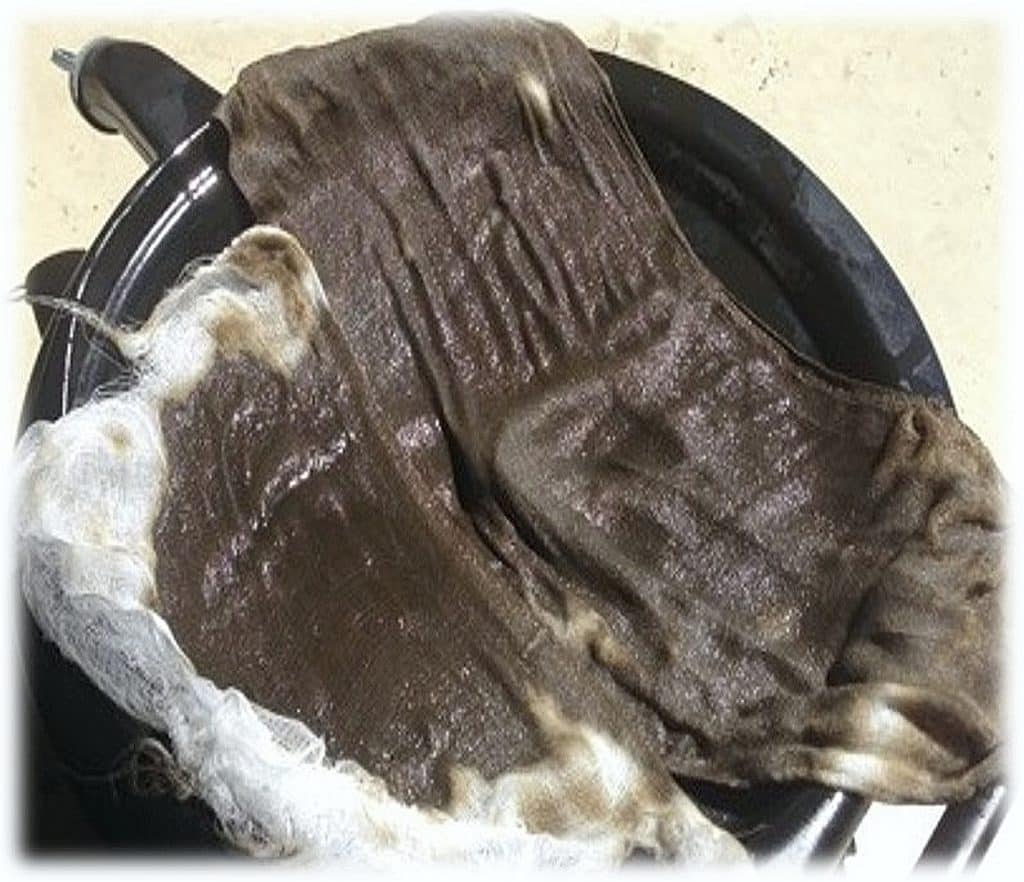
I asked Mark to service the engine with fresh oil (which he purchased from the FBO) and then perform an extended runup, watching the oil pressure needle carefully. He reported back that oil pressure was rock-steady. I then asked him to do a full-power high-speed taxi down the airport’s 7400-foot-long runway. Once again, everything checked out perfectly. Finally, I asked him to taxi back to the FBO, verify that they had a replacement oil filter they could sell him (they did), and then cut open the oil filter that the local A&P had installed. The filter was clean as a whistle.
At this point, I told Mark that I was comfortable with him flying the airplane home. He said he was, too. But since it was now late in the day and Mark and his wife were emotionally spent, Mark decided to fly the short hop to Carson City where they would remain overnight, and then fly home Monday morning.
The Rest Of The Story
Early next morning, Mark and his wife departed Carson City in the Skywagon, crossed the Sierras overflying Interstate 80, and continued home to the Bay Area. The engine performed flawlessly, and the oil pressure never wavered. Once home, Mark cut open the oil filter once again and once again it was clean, with no signs of metal.
Two weeks later, Mark’s airplane went in for its annual inspection and we found the source of that pesky bit of aluminum that had lodged in the PRV and initiated all this drama. The shop discovered that the engine’s oil filter adapter jam nut hadn’t been torqued properly at the previous annual inspection—this is the subject of a recurring AD—allowing the adapter to vibrate and tearing up some of the aluminum threads.
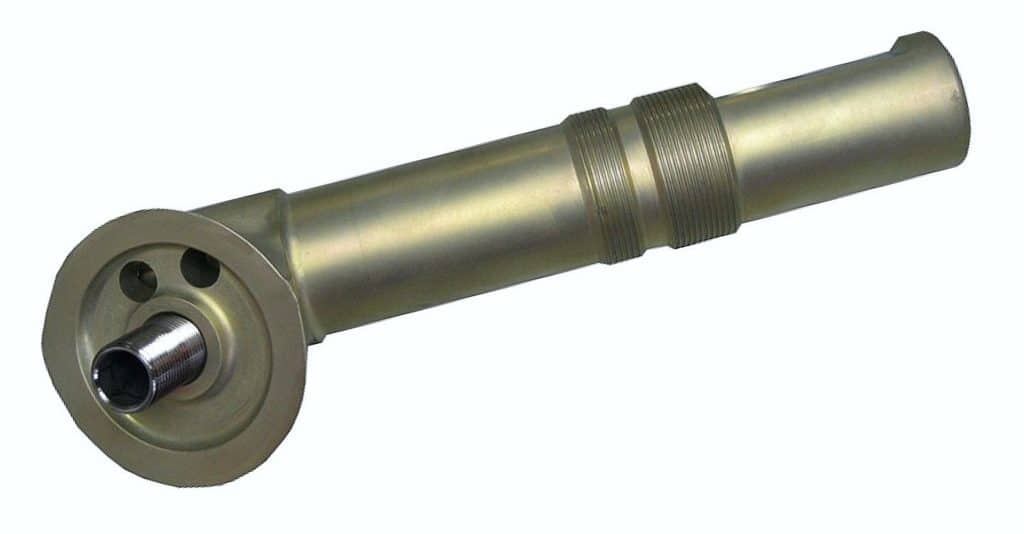
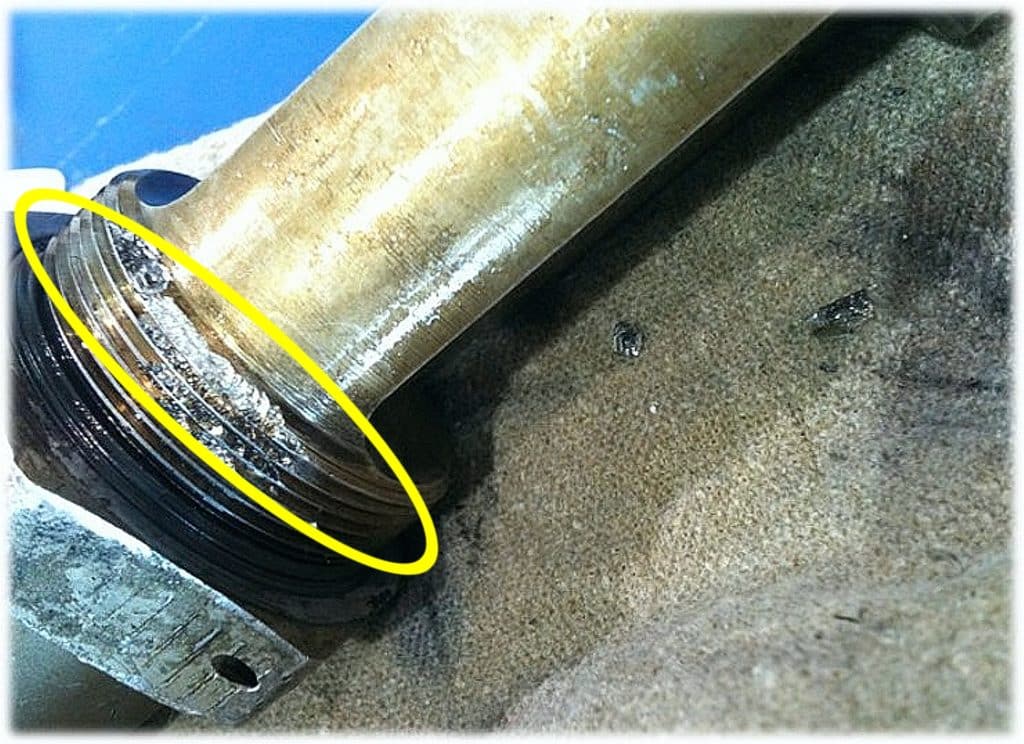
Just imagine how Mark would have felt had he given in to the A&P’s demand for an engine teardown, only to discover this. That would have been a tragedy! Yet that’s precisely what would have happened had Mark not had the presence of mind to seek a second opinion and the courage to take matters into his own hands.
You bought a plane to fly it, not stress over maintenance.
At Savvy Aviation, we believe you shouldn’t have to navigate the complexities of aircraft maintenance alone. And you definitely shouldn’t be surprised when your shop’s invoice arrives.
Savvy Aviation isn’t a maintenance shop – we empower you with the knowledge and expert consultation you need to be in control of your own maintenance events – so your shop takes directives (not gives them). Whatever your maintenance needs, Savvy has a perfect plan for you: